| Listing 1 - 10 of 11 | << page >> |
Sort by
|
Book
Year: 2000 Publisher: Greenbelt, Maryland : National Aeronautics and Space Administration, Goddard Space Flight Center,
Abstract | Keywords | Export | Availability | Bookmark
 Loading...
Loading...Choose an application
- Reference Manager
- EndNote
- RefWorks (Direct export to RefWorks)
Book
Year: 2000
Abstract | Keywords | Export | Availability | Bookmark
 Loading...
Loading...Choose an application
- Reference Manager
- EndNote
- RefWorks (Direct export to RefWorks)
Agriculture --- Agricultural conservation --- Carbon cycle (Biogeochemistry) --- Agricultural ecology --- Research --- Biogeochemistry --- Technology & engineering --- Science
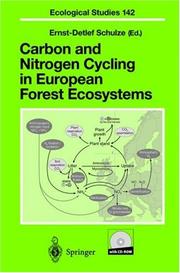
ISBN: 3540670254 9783540672395 3540672397 9783540670254 Year: 2000 Publisher: Berlin ; Heidelberg ; New York, NY [etc.] : Springer-Verlag,
Abstract | Keywords | Export | Availability | Bookmark
 Loading...
Loading...Choose an application
- Reference Manager
- EndNote
- RefWorks (Direct export to RefWorks)
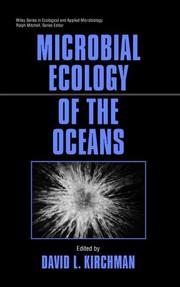
ISBN: 0471299936 0471299928 Year: 2000 Publisher: New York : Wiley - Liss,
Abstract | Keywords | Export | Availability | Bookmark
 Loading...
Loading...Choose an application
- Reference Manager
- EndNote
- RefWorks (Direct export to RefWorks)
Wiley Series in Ecological and Applied Microbiology, Ralph Mitchell, Series EditorMicrobial ecology is now recognized to be fundamental for understanding the natural world around us and is essential for examining life in the oceans. For the first time, this book brings together international experts to explore the incredibly diverse collection of microbes (and viruses) found in the oceans and to dissect many of the processes mediated by these microbes in aquatic environments. Although the oceans are emphasized, the organisms and processes discussed in the book occur in nearly all natural environments, including rivers and lakes.Microbial Ecology of the Oceans reviews some basics of marine microbiology andprovides a foundation for researchers and students new to the field while also examining several questions currently being discussed in modern microbial ecology. The book brings together concepts from autoecological studies of individual bacterial groups and from ecological studies of microbial assemblages in the oceans. In addition to drawing on the rich history of microbiology, Microbial Ecology of the Oceans uses the latest advances in biological and chemical oceanography and limnology to examine the role of marine microbes and viruses in the oceans. Some of the topics covered by this informative book include:* Microbial evolution, as revealed by molecular techniques* Microbes in carbon budgets and cycles* Viruses and grazers of bacteria* Competition between bacteria and phytoplankton for limited nutrientsMarine symbiosisMicrobial Ecology of the Oceans elucidates the role of microbes in food web dynamics and biogeochemical cycles in the ocean. It will prove to be an indispensable resource for students and researchers in biological and chemical oceanography, geochemistry, marine chemistry, freshwater ecology, and microbiology.Also in this series: Biofilms II: Analysis, Process, and Applications, James D. Bryers; Extremophiles: Microbial Life in Extreme Environm
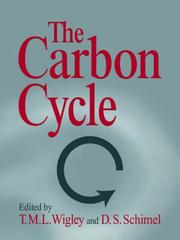
ISBN: 0511823533 1316175006 1316170675 0521018625 1316176215 1316173909 0511969198 1316178072 051157309X 9781316178072 9780511573095 0521583373 9780521583374 9780521018623 9780511823534 9781316175002 9781316170670 9781316176214 9781316173909 9780511969195 Year: 2000 Publisher: Cambridge ; New York : Cambridge University Press,
Abstract | Keywords | Export | Availability | Bookmark
 Loading...
Loading...Choose an application
- Reference Manager
- EndNote
- RefWorks (Direct export to RefWorks)
Reducing carbon dioxide (CO2) emissions is imperative to stabilizing our future climate. Our ability to reduce these emissions combined with an understanding of how much fossil-fuel-derived CO2 the oceans and plants can absorb is central to mitigating climate change. In The Carbon Cycle, leading scientists examine how atmospheric carbon dioxide concentrations have changed in the past and how this may affect the concentrations in the future. They look at the carbon budget and the 'missing sink' for carbon dioxide. They offer approaches to modeling the carbon cycle, providing mathematical tools for predicting future levels of carbon dioxide. This comprehensive text incorporates findings from the recent IPCC reports. New insights, and a convergence of ideas and views across several disciplines make this book an important contribution to the global change literature. It will be an invaluable resource for students and researchers working in the field.
Atmospheric carbon dioxide --- Carbon cycle (Biogeochemistry) --- Air --- Atmospheric chemistry --- Carbon dioxide --- Carbon dioxide content
Book
Year: 2000 Publisher: Reston, Va. : U.S. Dept. of the Interior, U.S. Geological Survey,
Abstract | Keywords | Export | Availability | Bookmark
 Loading...
Loading...Choose an application
- Reference Manager
- EndNote
- RefWorks (Direct export to RefWorks)
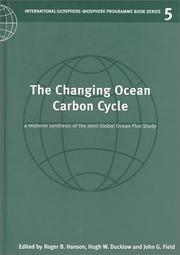
ISBN: 0521651999 0521656036 Year: 2000 Publisher: Cambridge ; New York, NY : Cambridge University Press,
Abstract | Keywords | Export | Availability | Bookmark
 Loading...
Loading...Choose an application
- Reference Manager
- EndNote
- RefWorks (Direct export to RefWorks)
Carbon cycle (Biogeochemistry) --- Marine ecology. --- Environmental modeling --- Seawater --- Environmental modeling --- Seawater
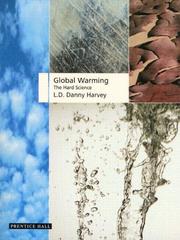
ISBN: 0582381673 9780582381674 Year: 2000 Publisher: Harlow Prentice Hall
Abstract | Keywords | Export | Availability | Bookmark
 Loading...
Loading...Choose an application
- Reference Manager
- EndNote
- RefWorks (Direct export to RefWorks)
Meteorology. Climatology --- General ecology and biosociology --- Environmental protection. Environmental technology --- Carbon cycle (Biogeochemistry) --- Global warming. --- Greenhouse effect, Atmospheric. --- Basic Sciences. Meteorology --- Climatology --- Climatic Change --- Carbon cycle (Biogeochemistry). --- Climatic Change.
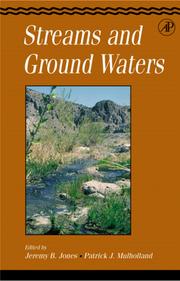
ISBN: 0123898455 9786611046637 1281046639 0080517994 9780123898456 Year: 2000 Publisher: San Diego : Academic,
Abstract | Keywords | Export | Availability | Bookmark
 Loading...
Loading...Choose an application
- Reference Manager
- EndNote
- RefWorks (Direct export to RefWorks)
Streams around the world flow toward the sea in floodplains. All along this transit, there is exchange of water between the stream itself and the surrounding sediments which form the floodplain. Many chemical, biological, and geological processes occur when water moves back and forth between streams and these flood plain sediments. Streams and Groundwaters focuses on the consequences of water flow between streams, their underlying sediments, and surrounding landscapes. Certain to appeal to anyone interested in stream ecology, the management of stream ecosystems, or landscape ecology, this
Stream ecology --- Groundwater ecology --- Hydrology --- Biogeochemistry --- Stream ecology. --- Groundwater ecology. --- Hydrology. --- Biogeochemistry. --- Biochemistry --- Geochemistry --- Aquatic sciences --- Earth sciences --- Hydrography --- Water --- Groundwater --- Aquatic ecology --- Underground ecology --- River ecology --- Freshwater ecology --- Hyporheic zones --- Ecology
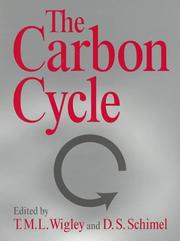
ISBN: 0521583373 9780521583374 9780511573095 9780521018623 Year: 2000 Publisher: Cambridge Cambridge University Press
Abstract | Keywords | Export | Availability | Bookmark
 Loading...
Loading...Choose an application
- Reference Manager
- EndNote
- RefWorks (Direct export to RefWorks)
Meteorology. Climatology --- General ecology and biosociology --- General biochemistry --- Atmospheric carbon dioxide --- Carbon cycle (Biogeochemistry) --- Atmospheric carbon dioxide - Congresses --- Carbon cycle (Biogeochemistry) - Congresses --- CARBON CYCLE --- CARBON DIOXIDE --- CARBON DIOXIDE POLLUTION --- OCCURENCE --- BIOLOGICAL STUDIES
| Listing 1 - 10 of 11 | << page >> |
Sort by
|

 Search
Search Feedback
Feedback About UniCat
About UniCat  Help
Help News
News